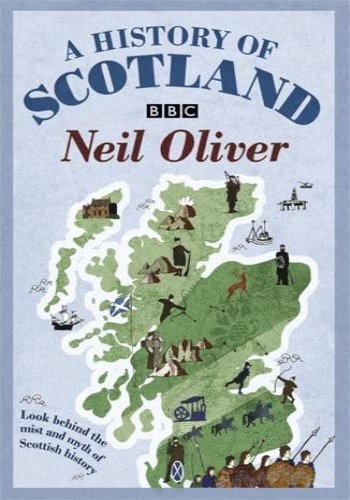Chapter 1: The Origins of Scotland (c. 10,000 - c. 800 AD)
* Describes the pre-history of Scotland, from the arrival of the first settlers to the establishment of the Pictish kingdom.
* Example: The bronze lunula found in Kirkcudbrightshire, Scotland, dating back to the 19th century BC, indicates a well-developed artistic culture during this period.
Chapter 2: The Kingdom of Alba (c. 800 - c. 1286)
* Relates the history of the Kingdom of Alba, ruled by the Scottish kings, from the reign of Kenneth MacAlpin to the death of Alexander III.
* Example: The Battle of Carham in 1018, where the Scots defeated the English, marked a turning point in the struggle for control of northern England.
Chapter 3: The Wars of Independence (c. 1286 - c. 1328)
* Chronicles the wars between Scotland and England, sparked by the death of Alexander III and the English king Edward I's claim to the Scottish throne.
* Example: The Battle of Stirling Bridge in 1297, led by William Wallace, resulted in a famous Scottish victory over the English.
Chapter 4: The Bruces and the Stewart Dynasty (c. 1328 - c. 1542)
* Explores the reigns of the Bruce kings and the establishment of the Stewart dynasty, which ruled Scotland for over 200 years.
* Example: The Declaration of Arbroath in 1320, which asserted Scotland's independence from England, became a symbol of Scottish nationalism.
Chapter 5: The Renaissance and Reformation (c. 1542 - c. 1603)
* Describes the cultural and religious changes in Scotland during the Renaissance and Reformation, including the rise of literacy and the spread of Protestantism.
* Example: George Buchanan's "History of Scotland," published in 1582, became a classic work of Scottish historical writing.
Chapter 6: The Union of the Crowns and the Covenant (c. 1603 - c. 1689)
* Discusses the personal union of England and Scotland under James I (VI of Scotland) and the subsequent conflicts over religion and political authority.
* Example: The National Covenant of 1638, signed by Scottish nobles and clergy, defended Presbyterianism and opposed the religious policies of Charles I.
Chapter 7: The Enlightenment and the Darien Scheme (c. 1689 - c. 1746)
* Examines the period of intellectual and scientific progress in Scotland during the Enlightenment, as well as the disastrous Darien Scheme that aimed to establish a Scottish colony in Central America.
* Example: The University of Edinburgh, founded in 1583, became a major center of Enlightenment thought, producing notable figures such as David Hume and Adam Smith.
Chapter 8: The Jacobite Risings and the Union (c. 1746 - c. 1800)
* Chronicles the Jacobite uprisings, led by supporters of the Stuart dynasty, and their eventual defeat at the Battle of Culloden in 1746, which led to the Act of Union in 1707.
* Example: The Battle of Culloden was a decisive victory for the British government and resulted in the suppression of the Jacobite movement.
Chapter 9: The Making of Modern Scotland (c. 1800 - Present)
* Explores the industrial revolution, the rise of cities, and the social and economic changes that transformed Scotland in the 19th and 20th centuries.
* Example: The Forth Rail Bridge, designed by Benjamin Baker, became a symbol of Victorian engineering excellence when it opened in 1890.
Epilogue: Scotland in the 21st Century
* Considers the political, social, and cultural challenges facing Scotland today, including its relationship with the United Kingdom and the ongoing debate over independence.
* Example: The Scottish independence referendum in 2014, which resulted in a vote to remain part of the UK, marked a significant moment in Scotland's history.







